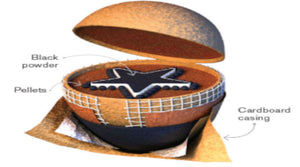Hazard types and what they mean.

At Pyrotex Fireworks we are frequently asked about ‘what is the difference between 1.4g and 1.3g fireworks?’. Lets try and explain. Up until 2017, all fireworks in the UK were classified with a British Standard (BS) so we got to know over the years the different classes included in relation to Fireworks
British Standards. There were two different types available to the general public; garden fireworks had a 5m safety distance and display fireworks with a 25m safety distance. Both of these could be classed as 1.3g or 1.4g consumer fireworks.
1.3g. This is more powerful and will contain more explosive power than 1.4g fireworks
1.3G Fireworks use the warning label below.

1.4G Fireworks have a different identity as you can see in the next image.

So What dose F1,F2.F3 and F4 mean?
With categories F1,F2,F3 and F4 the categories are simple defined as:
· Category F1 – Indoor Fireworks – presenting a very low hazard and intended for use in confined areas like inside domestic buildings.
· Category F2 – Garden Fireworks – present a low hazard and are intended for outdoor use in areas such as small gardens.
· Category F3 – Display Fireworks – present a medium hazard, which are intended for outdoor use in larger gardens or open areas such as private fields.
· Category F4 – Professional Fireworks – have a high hazard, which are intended for use only by persons with specialist knowledge/professional company for use within professional displays.- YOU AS THE GENERAL PUBLIC CANNOT PURCHASE THESE
Do not confuse these categories with the hazard type category used with regards to transportation and storage of fireworks, normally identified by a hazard diamond on the outer box or on the outside of a vehicle. The hazard types are defined as:
· Hazard Type 1 (HT1 or 1.1g fireworks) – can present as a very high hazard with potential of mass explosion.
· Hazard Type 2 (HT2 or 1.2g fireworks) – present a serious projectile hazard but does not have a mass explosive hazard.
· Hazard Type 3 (HT3 or 1.3g fireworks) – Has a fire hazard and minor blast and projectile hazard but does not have a mass explosion hazard.
· Hazard Type 4 (HT4 or 1.4g fireworks) – presents a low fire hazard and with no significant blast or projectile hazard.
WHAT YOU NEED TO KNOW:
The most commonly used classifications to the members of the public are categories F2 and F3 although F1 can also be purchased.
They will find these fireworks fall into either HT3(1.3G) or HT4 (1.4G) with HT3 ~(1.3G) being the higher classification and in general offering the bigger bursts and effects within the fireworks, 1.4g fireworks also produce stunning effects and value for money.
WHAT ARE THE BEST FIREWORKS OR CATEGORY TO BUY?
This will depend on the occasion, your available budget and how long you want your display to last. Generally 1.3g fireworks are bigger and louder, but that’s no guarantee they are better than some of our 1.4g fireworks.
- Peter Hemmings







Comments 2
Paul Watkins
Another good read here. I have always wondered what this was on the side of a firework.
Please keep this sort of information coming as it really is nice to know.
Terry Halper
Thank you for this information. It was very informative.
Terry.